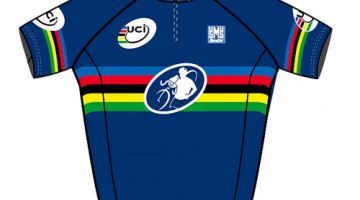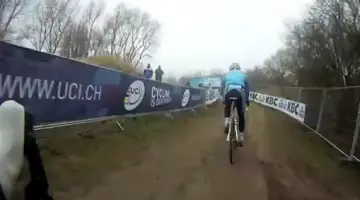CM: There seems to be life after ’cross. You are now employed by SwissStop, one of the best brake pad producers in the world. What exactly do you do? Can you integrate the experience you gained as a professional?
CH: I think so. I’m responsible for the whole international distribution chain and OE. But I am also responsible for events and fairs, product tests and much, much more.
CM: Disc brakes are the current hot topic in the world of cyclocross. Is it a brilliant development, or just the solution to a problem that we didn’t have?
CH: Yes and no. First off, I think we should differentiate a bit. For example, is the ’cross bike used as sports equipment or for competition? If you race, I think for quite some time most riders will continue to choose cantilevers, assuming they can choose. But if you only race occasionally but like to train on- and off-road, then a two-piston disc brake certainly makes sense. I have a completely different opinion in the case of road bikes. I wouldn’t switch to discs there.
CM: Why do all the cyclocross pros in the USA ride with discs, and in Europe—except for van der Haar and Helen Wyman—nobody really does?
CH: I think the main reasons are marketing and that Shimano discs are not available yet.
CM: But isn’t it the case that the industry claims that discs are better for racers because of their power and modulation—under all conditions?
CH: That is certainly not wrong, but it’s also marketing. If you’re advertising something, you don’t point out the disadvantages.
I know of a lot of disc-riders who have massive problems with the durability of their disc brake pads. Helen Wyman and Adam Myerson, both SwissStop-sponsored riders, ride our new Disc 15e pads. They seem to work very well. Simon Zahner also manages OK with our Disc 32 on his SRAM disc brake. Depending on the conditions, cantilevers also have advantages.
CM: So what are these advantages in your opinion?
CH: They don’t brake as well in bad conditions, but in exchange, you have far less or almost no problems with the brake pads wearing out during a race.
CM: Weight?
CH: I don’t see that as much of a problem. You don’t have to invest more than about 250 grams if you pay a little bit more attention than usual to your material and look around to find the best parts. My Diamond Back Disc CX with FFWD carbon wheels weighs just over seven kilograms. Much less than that isn’t even allowed.
CM: Why aren’t the disc pads bedded in by SwissStop? According to what I’ve heard, several people— including pros—got caught between a rock and a hard place because they didn’t bed their pads correctly.
CH: When you bed-in the pads, it’s not just about the heat that a disc pad needs for prep, but also about adapting the brake pad to the rotor and vice versa. Our pads are already treated after production. You can tell, because the cycle is very short that is required to bed them in. But this treatment can’t compensate for the optimal interaction between the pad and the rotor.
CM: What will have been the bigger revolution in cyclocross: Di2 or discs? Why?
CH: In my opinion, Di2. In my case, Di2 always worked reliably in three seasons of racing. And other than cleaning, changing the chain and loading the battery, the effort required to care for it and set it up was basically zero.
CM: Do you have a tip for racers in the areas of technique, race tactics, preparation, nutrition? Something that is overlooked by most?
CH: The balancing act between training as much as possible but still arriving at races as recuperated as possible is tough. Many riders lose their concentration because of the stress of races; they then also stress out during their race. The trick is to focus as long as you can on finding the perfect line everywhere. Technique and tactics are often underestimated. I always say that you shouldn’t have to concentrate on riding fast in the sense of physical exertion during the first third of a race. It should just flow. Concentrate on riding a clean line and keeping a cool head.
’Cross isn’t just full throttle for “x” minutes.
Translated by Christopher Langer, www.vehikel-translations.de


























